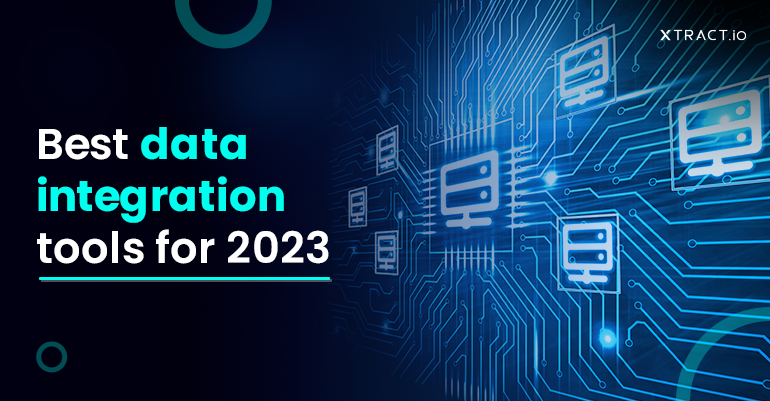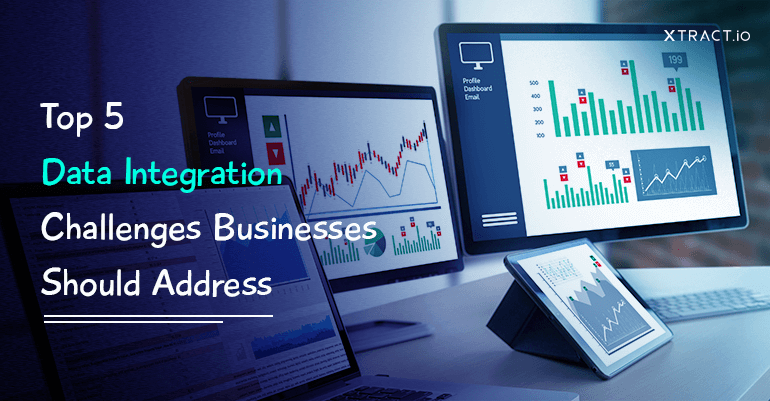Data integration tools have become vital to modern business operations. With billions of data points generated daily, businesses want to integrate the data to scale their business analytics and operations.
Data integration requires the right tools and high-end technologies to make workflows efficient. Moreover, it is a complex process that can be time-consuming due to multiple factors in the data ecosystem. Today’s businesses use data integration tools to reap valuable insights and make informed decisions.
In this blog, find out the growing importance of data integration and the best tools that come in handy for businesses at any scale.
Data integration and its importance
Data integration is combining data from disparate sources, bringing into a unified view that the business can access and analyze. Simply put, it is a process of syncing the databases and systems used across multiple departments within the organization to improve the workflows.
Integrating the data sources helps consolidate the data to use them more efficiently. It offers businesses a clear understanding of their workflows, customer behavior, and market trends. This means new opportunities, mitigating risks, and preventing data silos.
Data silos are a common problem that organizations face, primarily when the business units use different systems to manage their data. It can lead to inconsistencies, errors, and duplication, negatively impacting business operations.
Data integration helps businesses gain a complete view of their operations and improves accuracy across their databases. It also helps in enhancing performance by automating the manual process, increasing agility, and reducing costs. By investing in data integration solutions, businesses can make informed decisions faster and react to market conditions more quickly.
Benefits of data integration tools
Data integration tools can provide several benefits for businesses that use them. These are some of its key benefits.
- Ensures data quality by standardizing and cleansing it.
- Makes workflow automation easy for manual data integration processing.
- Enhances visibility to identify patterns and trends for better decision-making.
- Enables real-time analytics for multiple sources for a precise picture of business operations.
- Reduces cost by reducing errors and preventing data from being left in silos.
- Helps in better compliance with regulatory requirements by ensuring accurate data.
Top data integrations tools for 2023
Xtract.io
Xtract.io is a powerful data integration solution that enables organizations to streamline their data integration processes and gain valuable insights from their data. The platform allows users to easily connect to various data sources, including databases and web applications, to quickly extract, transform, and load data to their preferred destination.
Xtract.io provides a simple and intuitive interface with drag-and-drop functionality for building data pipelines and automating data workflows. Additionally, the solution covers a range of features, such as data quality checks and enrichment, metadata management, and advanced data transformation capabilities, ensuring accurate and consistent data.
The tool offers pre-built connectors for popular applications and platforms, such as Salesforce, NetSuite, Workday, and AWS, as well as the flexibility to create custom connectors for unique integration requirements so that businesses can implement an effective data initiative in a shorter timeframe.
Using a low-code approach, Xtract.io allows businesses to connect APIs with better visualization abilities, enabling organizations to take complete control of the data integration process and seamlessly track the performance of the workflows.
Informatica PowerCenter
Informatica PowerCenter is another popular data integration platform offering various valuable features to help organizations efficiently manage and integrate their data. Its main features include data profiling, cleansing, quality management, metadata management, and integration.
Informatica focuses on features that help organizations maintain a clear understanding of their data assets and the relationships between them. Its ability to handle complex data integration tasks and robust data profiling and quality management capabilities make it one of the best choice for modern data-driven organizations.
Talend Data Integration
Talend is another efficient data integration tool enabling organizations to effectively integrate, transform and manage their data across various platforms and systems. It is an open-source tool that provides a comprehensive set of data integration and processing features, including data profiling, cleansing, enrichment, mapping, quality management, and governance.
Talend supports a variety of data sources, including traditional databases, big data platforms, cloud-based applications, and web services. Moreover, Talend allows users to design and deploy workflows with ease quickly. It also provides robust scheduling and monitoring capabilities, which ensures that data is delivered on time and meets the required quality standards.
Dell Boomi
Boomi is a cloud-based integration platform from Dell that simplifies the process of connecting applications, data sources, and devices. It enables organizations to design, execute and manage data integration processes seamlessly without requiring hardware or software installation.
Dell Boomi offers a low-code drag-and-drop interface, allowing users to create and deploy integration workflows without extensive programming knowledge. It includes various data mapping and transformation features, including data cleansing, enrichment, and validation, ensuring data accuracy and consistency across systems.
Boomi also provides robust monitoring and management capabilities, enabling users to track integration workflow performance and troubleshoot real-time issues.
Snaplogic
SnapLogic is a cloud integration platform that connects business systems and data sources. It offers a wide range of pre-built connectors for popular cloud-based applications, on-premises databases, and big data platforms, making it easy for users to create integration pipelines without extensive programming knowledge.
Similarly, SnapLogic provides a user-friendly interface with drag-and-drop functionalities to ease the deployment of data integration workflows. It also includes advanced data transformation features, such as data mapping, normalization, and validation, ensuring data consistency and quality across systems.
SnapLogic offers extensive monitoring and management capabilities, enabling users to track performance, troubleshoot issues, and optimize workflows for optimal efficiency. The platform is scalable and secure, with built-in encryption, role-based access control, and other security features to protect sensitive data.
Factors to consider while choosing a data integration tool for your business
Today’s rapidly changing time requires data integration solutions to be highly scalable and cloud compatible. Although many great options exist, choosing the right data integration tools that satisfy a specific business use case can be tricky. The tool should simplify your data integration process and resolve the challenges, making it efficient and hassle-free. Look out for these crucial factors when adopting a data integration tool.
- Compatibility: Ensure the data integration tools are compatible with the data sources and systems that your business currently uses. It should also support multiple data formats.
- Ease of use: Assessing whether the tool is easy to use and configure is crucial. Ensure the user interface is simple. Users should be able to use the tool free of technical knowledge.
- Scalability: It is essential to check if the solution can handle increasing data. It should scale as your business grows and support new data sources and formats as they become available.
- Flexibility: A flexible data integration tool meets your business’s unique needs. It should provide customization; for instance, companies should be able to enable creating their custom integration or modify existing ones.
- Performance: Evaluate the tool’s performance by comparing its processing speed, capacity, and latency. Handling large amounts of data without compromising performance is an essential factor to consider.
- Security: It is essential to carefully analyze the tool’s security features, such as data encryption and user authentication. Ensure that the tool meets the business’s security requirements and compliance standards.
- Support and Maintenance: Ensure the solutions provider offers tech support and maintenance. Consider factors such as availability of technical support, response time, and maintenance cost.
- Cost: Cost might vary for the tools, as the intricacies differ depending on the tool functionalities and are highly influenced by their performance on varying workloads. Also, evaluate the associated costs like licensing, ownership, and maintenance costs.
Conclusion
The need for the best data integration tool prevails across various industries. However, the business use cases vary significantly as demand continues to evolve. The above data integration tools have both similarities and differences. It is crucial to analyze the features of your business use case and choose the one compatible with your specific needs.
Adopting a scalable data integration solution empowers business intelligence and analytics. However, the organization must establish the scope of data integration within its operations to find compatible solutions for distinct needs. All available options in the market come with customization limitations. In that case, businesses can also invest in custom data solutions that cover their unique requirements.
Xtract.io can enable businesses to gain maximum value from the data and helps companies to go beyond data integration. With Xtract.io, your business can automate end-to-end data management in minutes and leverage extensive capabilities. Our data automation suite can help you effortlessly customize the data pipelines, allowing enterprises to get your data accurate for analysis and enabling you to thrive in critical areas of business operations. Start integrating your business data with Xtract.io today!







